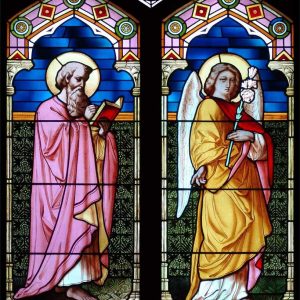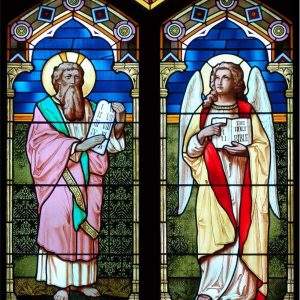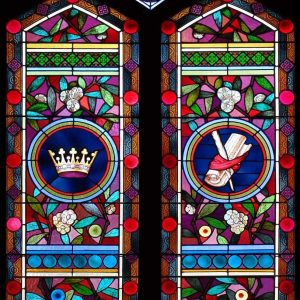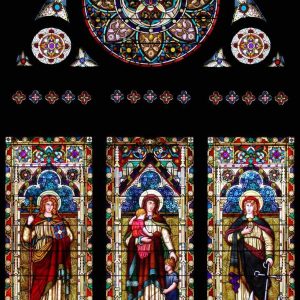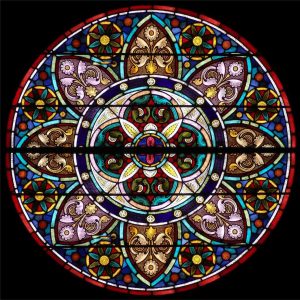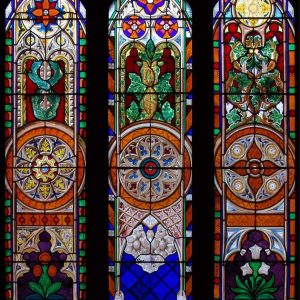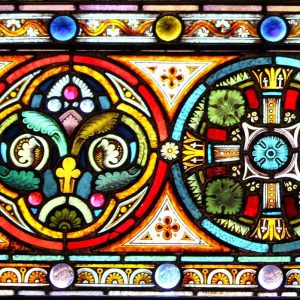




In 1879, Newport’s First Unitarian Society had been meeting at the Old Hopkins Meeting House. Its third minister, the Rev. M. K. Schermerhorn, with his great love and reverence for William Ellery Channing, brought forward the proposal to create a memorial to Channing on the centenary of his birth. At first Rev. Schermerhorn’s ideas were thought to be a “wild dream,” but he quickly formed a committee whose members agreed that no memorial would be more fitting than a lasting edifice, to be called Channing Memorial Church. Within a year they had successfully raised $50,000 for the construction, the first $35,000 coming from within Newport and another $15,000 raised through national and international subscription. (The ultimate cost total was $150,000, the equivalent of several million dollars today.) In his pleas for contributions, Schermerhorn called the memorial “a speaking monument of gratitude to Channing and his teachings for many generations.”
The Rev. Channing’s 100th birthday was celebrated at the cornerstone laying ceremony in 1880. On that day some 2,000 people attended. Julia Ward Howe, Ralph Waldo Emerson, the Rev. William H. Channing and Governor VanZandt spoke, and letters of Oliver Wendell Holmes, Henry Wadsworth Longfellow and others were read.
The Romantic Gothic Revival style building was designed by architects Elbridge Boyden & Sons, who donated their services, with the expertise of stone mason William Gossling and carpenters Buzzell & Wood, all of Worcester, MA. Dedicated in 1881, Channing Memorial Church was built from porphyric granite, cut in Lyme Connecticut. The Chancel woodwork was crafted by George F. Vernon Jr. of Newport with the mahogany altar and cherry screen matching the cherry wood used throughout church. The ceiling by John Borden of New York used carved “brous plaster-work” with medallions originally intended to be filled with memorial paintings.
The sweeping stone steeple, artistry, craftsmanship and architectural detail proclaim that the builders of this church wanted to make it a place of great inspiration and lasting beauty. The building has remained essentially the same since 1881. The pulpit from which William Ellery Channing preached in the old Hopkins Meeting House is in the front of the church. The most prominent features of the sanctuary are the beautiful stained glass windows, notably two by John LaFarge. The striking “Parable of the Sower” chancel window was crafted by LaFarge’s associate Donald McDonald and was a gift of Channing’s descendants.
Two other windows speak to the heart of what the congregation has always believed and stood for. When one first enters or departs the church, the windows of Samuel West in the east vestibule, inscribed with the words Faith, Hope and Charity, are reminders of the congregation’s aspirations. These words are again visible at the east transept in the Gothic windows of S.P. Belcher and again on the northwest cornerstone of the building. The members and friends of Channing built the church in honor and gratitude for the work of William Ellery Channing and also as a strong statement of the value of the Unitarian faith. As the Rev. Schermerhorn said of his successful efforts, “Love lies in things done.”
A brochure with full information about Channing’s stained glass windows is available in the church vestibule.
The statue of the Reverend Channing that stands opposite the church in Touro Park was presented to the City of Newport in 1893 by William G. Weld of Boston and is the work of William Clarke Noble.



